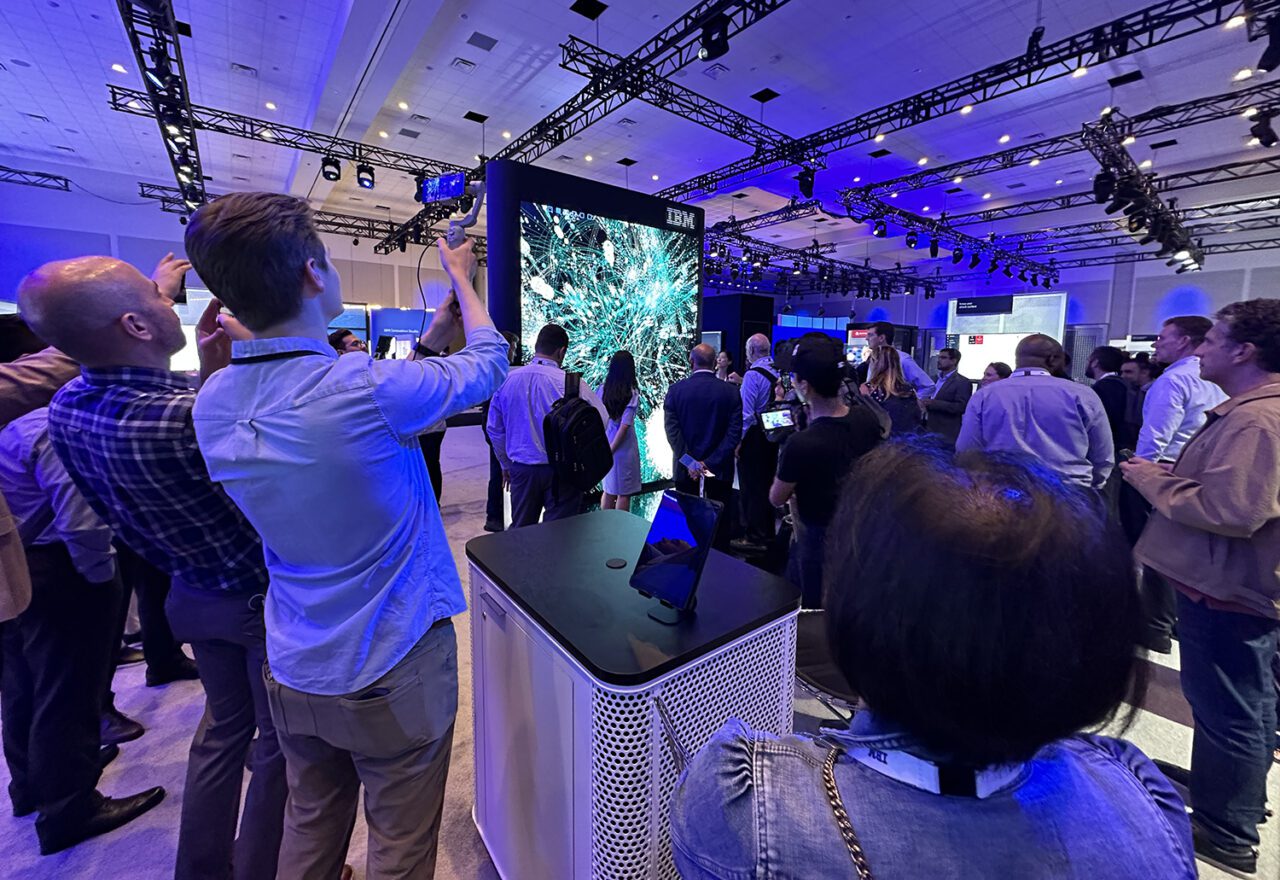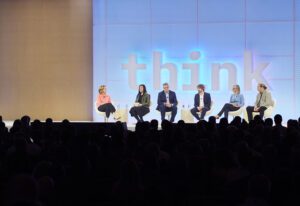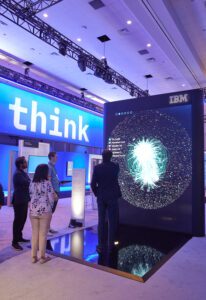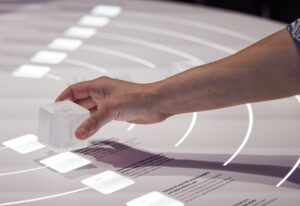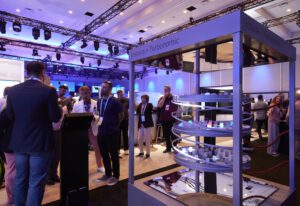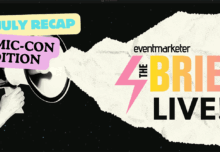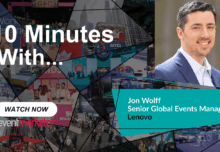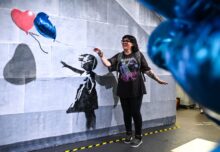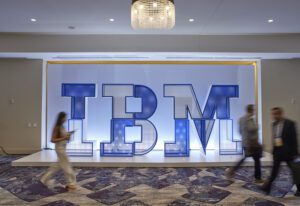
IBM Think has transformed from a 30,000-person show to a smaller, hyper-curated experience.
Like many of the industry’s mega b-to-b shows, IBM Think is evolving to reflect the current business environment—one that is driven by speed and personalization. The flagship experience, launched in 2018 as part of a portfolio consolidation, marked a new chapter this month as it reconvened May 9-11 in Orlando as a smaller, targeted in-person conference designed to serve up content and networking experiences “that matter most to you.” Emphasis on the you.
IBM Think hosted several thousand invited senior-level attendees within a targeted client and partner base at Loews Royal Pacific Resort at Universal Orlando, and it served as a kickoff to this year’s Think on Tour series, which will visit 11 cities across the globe June through October.
“People are coming back face-to-face, but they’re doing it differently, and we had to adapt to that,” Colleen Bisconti, vp-global conferences and events at IBM, described ahead of IBM Think 2023. “A major part of the shift for us was no longer can we be all things to all people.”
The team analyzed the flagship show’s value proposition, attendee demographics, how content is structured and how IBM could better position itself as a “powerful” thought leader through Think. What was once an event for 30,000 attendees, this year was focused on driving conversations with key customers and partners, and creating an efficient environment for personalization at the individual level.
Bisconti describes it as a “huge strategic differentiation” on what Think will be moving forward—a highly targeted flagship conference experience, with multiple extensions of the corporate story being told via Think on Tour, digital content and community engagement to accommodate the individual needs of all users.
 Reimagined B-to-B Event Strategies:
Reimagined B-to-B Event Strategies:
- How Mohawk Flooring’s In-person Roadshow is Impacting How it Exhibits in the Future
- Hussmann Steps Back from Trade Shows and Leans into an Educational Mobile Tour
CURATED EXPERIENCES
IBM is placing a greater emphasis on understanding why attendees are coming to its events. For Think, the team focused on designing the event experience first, and then determined the target audience for it and who would get the most value out of it. “No longer is it about how many people can we get or what’s our target in terms of registration,” Bisconti says. “It’s about how do we get the right people because we have crafted this experience that we think meets these needs. That’s a huge difference from where we were in 2019.”
For this new generation of selective attendees, event marketers have a “responsibility” to understand why people are coming and help make sure they have personalized experiences across every element on offer. This year, the IBM team saw more attendees add sessions from the event catalogue to their calendars, set up meetings and begin networking with each other through the event app, targeted communications and connections with sales representatives than ever before.
“The new normal is that attendees will drive their own experience, and what IBM always does best is they are continually willing to reinvent and start over and think about it both from the industry insight as well as the attendee insight,” says Fiona Bruder, president of George P. Johnson, IBM’s experiential agency of record for more than 20 years, which helped architect the modern IBM global event portfolio. “It’s a curated experience unique to ‘me.’ It’s hard work to drive that, and you have to be willing to take risks.”
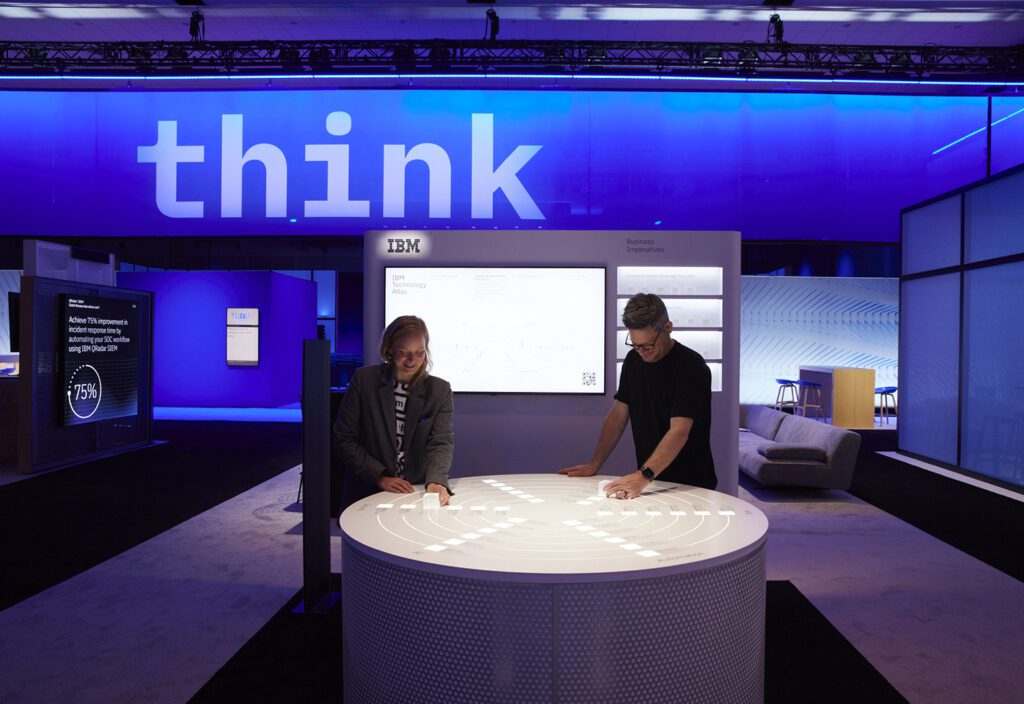
In “The Forum,” attendees took part in immersive experiences and experienced IBM technology and innovations in action.
FORMATS THAT DRIVE CONVERSATION
The show this year was designed to deliver high-level messaging through keynotes and activations that then drove attendees into roundtable-like formats to have conversations about them. The goal was for attendees to leave feeling as though their presence at Think is “making a difference”—through with whom they interacted on-site or in what they bring back to their companies, according to Bisconti. Hot topics at the show included AI for business, security, sustainability, hybrid cloud and what’s next in computing.
“Shorter keynotes, more powerful stories that are based on client examples, and partner inclusion, and then you take people from that experience down into roundtable experiences and down into a conversation versus I’m going to sit and consume content,” she says. “You hear the content in a short and very powerful way, and then you drive to conversations.”
What was once the “expo” portion of the event was rebranded as The Forum. In the space, attendees took part in immersive experiences and experienced technology and innovations in action. They could engage with content and learn from peers about real use cases, and there were opportunities to learn “quickly,” like “discover the business value of top technologies in 15 minutes or less.” And then, they could listen in on macro trends impacting business and society from “industry luminaries.”
“We named it purposely, so it’s a place to gather, a place to exchange ideas, and this idea that The Forum is a destination,” Biscotti says. “It’s the heart of the event, and it’s how we’re showing up and how we’re telling our stories through our clients in a more holistic way.”
A SCALABLE EVENT MODEL
Bisconti is the driving force behind the IBM portfolio’s scalable event model, in which there aren’t any more one-and-done experiences, but everything, from a tabletop third-party presence to a global conference, to where and how a logo is placed, ladders up and tells one consistent story.
Think on Tour, for example, features one-day intensives of the Think experience that show up in unique ways in IBM markets around the world. This year’s tour will deliver content and ideas from the flagship IBM Think and feature regional IBM leaders and content delivered through a “local lens.” Each event has a miniature Think Forum space with presentations, demos and areas for meeting and networking. Tour locations in some cases are co-locating with other events—Think Paris takes place in June on the first day of Viva Technology at Paris Expo Porte de Versailles.
“We’re testing, we’re innovating, we’re trying new things. For me, agile means make the best decision you can with the information you have today and then learn from it,” Bisconti says.
TAKE A TOUR OF IBM THINK 2023:
Keys to Successful and Long-term Client/Agency Partnerships:

Fiona Bruder, President, George P. Johnson
“You will always have your core people that deeply understand your business. And you’ll always have fresh faces to continue to bring new thoughts. And for me, if I think about where we’ve been able to be the most successful, it’s that combination.”

Colleen Bisconti, VP-Global Conferences and Events, IBM
“You’ll never hear me refer to GPJ as our agency. They’re our partners. And that changes the tone. Together we come to compromises, we celebrate successes, we learn from failures. And I think that’s what’s made this relationship work so well for all of us, is that continual learning, continual call to push each other. You’ll be on a call, and I guarantee you that you couldn’t tell who was a partner versus who was an IBM. It’s this idea that we’re all in this to create the most exceptional experience that we possibly can.”


